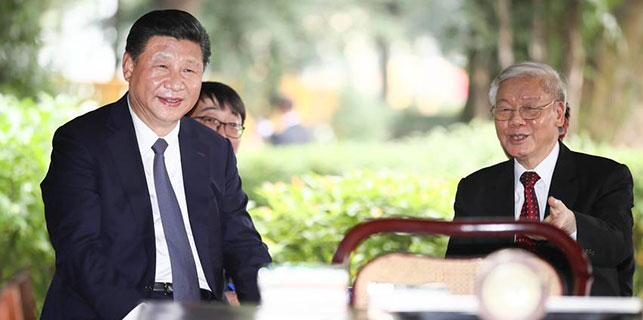China develops a catapult for planes
Electromagnetic system to boost carrier fleet's combat capability
China has developed its own version of a cutting-edge device previously possessed only by the United States and is poised to use it to boost its aircraft carrier fleet's combat capability.
The device, known as an electromagnetic launch system, or electromagnetic catapult, was designed by Chinese engineers to assist planes taking off from aircraft carriers. The system has been tested with J-15 carrier-borne fighter jets, according to Rear Admiral Yin Zhuo, director of the People's Liberation Army Navy's expert consultation committee.
He said on China Central Television recently that J-15s have made "thousands of takeoffs" using the electromagnetic launch system.
Before China developed its catapult, expertise in the technology had long been the domain of the United States, because of the system's complexity and sophistication.
Unlike taking off from a runway on the ground, fixed-wing aircraft on carriers need assistance from a special apparatus to take off because a flight deck is not long enough for a plane to gain sufficient speed to fly. Catapults give them an extra shove.
A steel cable attaches the plane to the catapult and drags it rapidly forward for takeoff. With older technology, the pulling force of the cable was powered by steam. Electromagnetic force provides an alternative solution that brings certain advantages.
China's midsize carrier, the CNS Liaoning, uses a ski-jump design for its takeoff ramp - with an upward slope at one end to increase the angle of a plane's wings, thereby generating lift. Large carriers, however, such as those deployed by the US Navy, use catapults.
Electromagnetic launch systems are believed to be the most advanced carrier-based technology for assisting takeoffs.
Yin said China was able to develop the device because its engineers have designed a state-of-the-art ship-based power system. The country has outperformed the US in the development of such systems, which are considered by military experts as a game-changing technology in naval hardware, he said.
"Compared with the US, we have better technologies in key parts, such as motor-control devices and power distribution software. We are leaders in the research and development of integrated electric power systems," he said.
Yin said that China now possesses proven technologies for both steam catapults and electromagnetic launch systems. He said the Navy's second domestically designed carrier will use a catapult system to assist takeoffs rather than the ski-jump mode.
The Chinese military has yet to announce details regarding the new carrier, but some observers speculate that construction will begin soon in Shanghai.
The PLA Navy's current carrier, the Liaoning, was refitted from a partially built Soviet ship. It went into service in September 2012 and has completed several long-range training exercises.
In late April, China put its first domestically developed carrier into the water at a shipyard in Dalian, Liaoning province. It is currently being fitted with equipment and undergoing tests. It is the largest and most sophisticated vessel yet for China. Its name will be announced once it is commissioned.
Both carriers have a displacement of 50,000 metric tons and employ the ski-jump mode for launching fixed-wing aircraft.
Wang Yanan, editor-in-chief of Aerospace Knowledge magazine, said that the use of a catapult enables a carrier to launch larger and heavier aircraft such as fixed-wing early-warning planes and allows fighter jets to carry more fuel and weapons.
He said electromagnetic launch systems are able to control the force of acceleration better than the old steam-powered design, and is safer for planes. They are also smaller and use less fuel than the steam-based devices, he said.
zhaolei@chinadaily.com.cn

(China Daily 11/16/2017 page5)


















